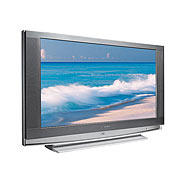iTunes Music Store Sells One Million Videos in Less Than 20 Days
"Selling one million videos in less than 20 days strongly suggests there is a market for legal video downloads," said Steve Jobs, Apple's CEO. "Our next challenge is to broaden our content offerings, so that customers can enjoy watching more videos on their computers and new iPods."
Music videos are available from artists including Madonna, U2, Eurythmics, Coldplay and Kanye West, and animated shorts are available from Academy Award-winning Pixar Animation Studios. In a landmark deal with ABC Disney, the iTunes Music Store also offers current and past episodes from the two most popular shows on television, "Desperate Housewives" and "Lost" as well as the new drama series "Night Stalker" and the two most popular shows from Disney Channel, "That's So Raven" and "The Suite Life of Zack and Cody."
With Apple's legendary ease of use, pioneering features such as integrated Podcasting support, iMix playlist sharing, seamless integration with iPod® and groundbreaking personal use rights, the iTunes Music Store is the best way for Mac® and PC users to legally discover, purchase and download music online. The iTunes Music Store features more than two million songs from the major music companies and over 1,000 independent record labels, 11,000 audiobooks, gift certificates and exclusive music not found anywhere else online.
Apple ignited the personal computer revolution in the 1970s with the Apple II and reinvented the personal computer in the 1980s with the Macintosh. Today, Apple continues to lead the industry in innovation with its award-winning desktop and notebook computers, OS X operating system, and iLife and professional applications. Apple is also spearheading the digital music revolution with its iPod portable music players and iTunes online music store.
NOTE: Apple, the Apple logo, Mac, Mac OS, Macintosh, iTunes and iPod are trademarks of Apple. Other company and product names may be trademarks of their respective owners.





















